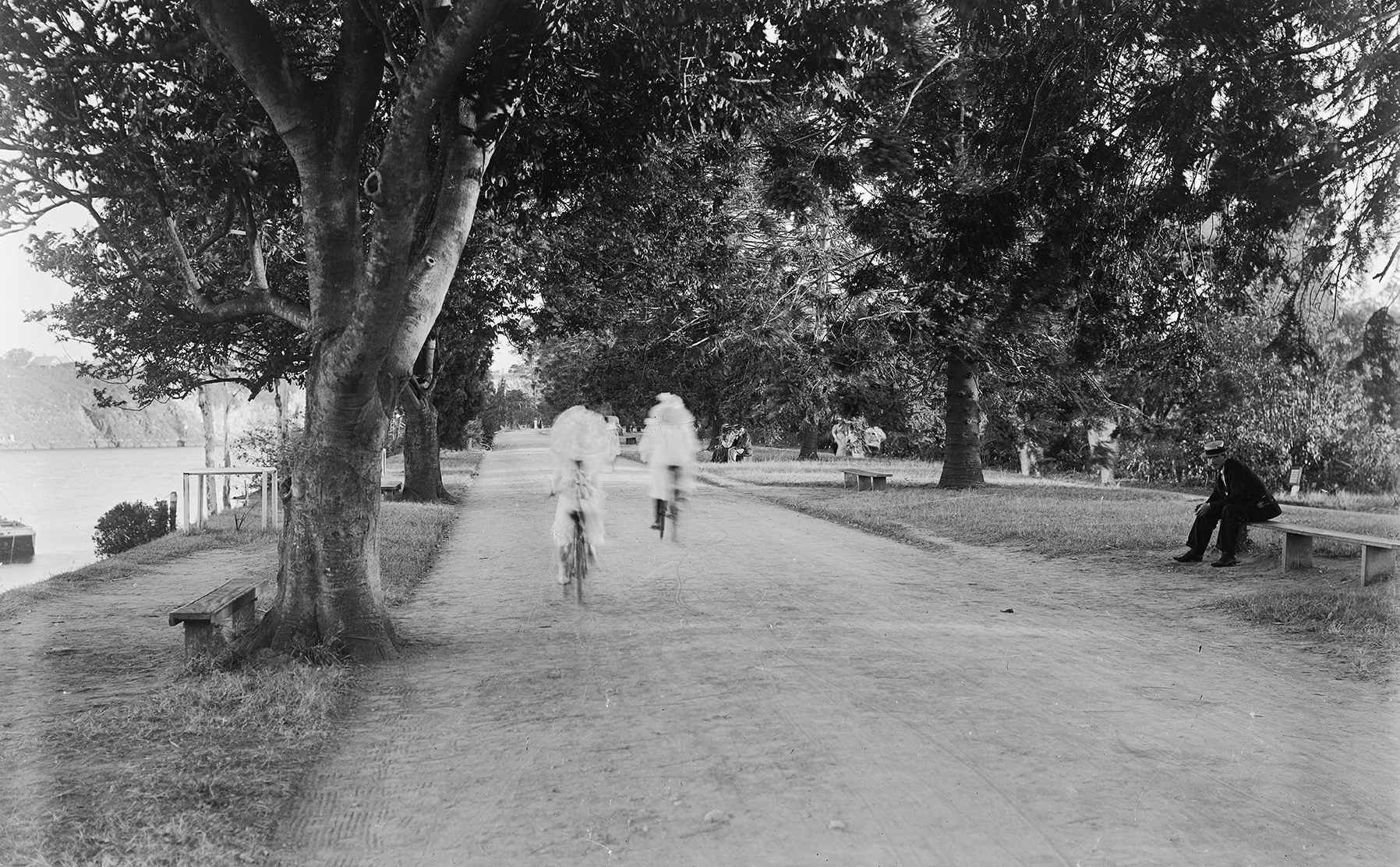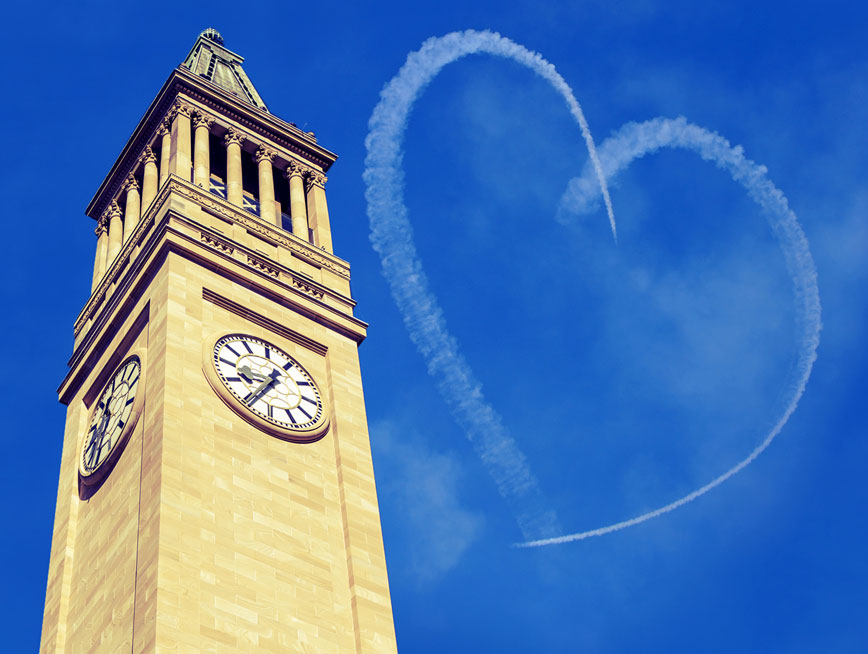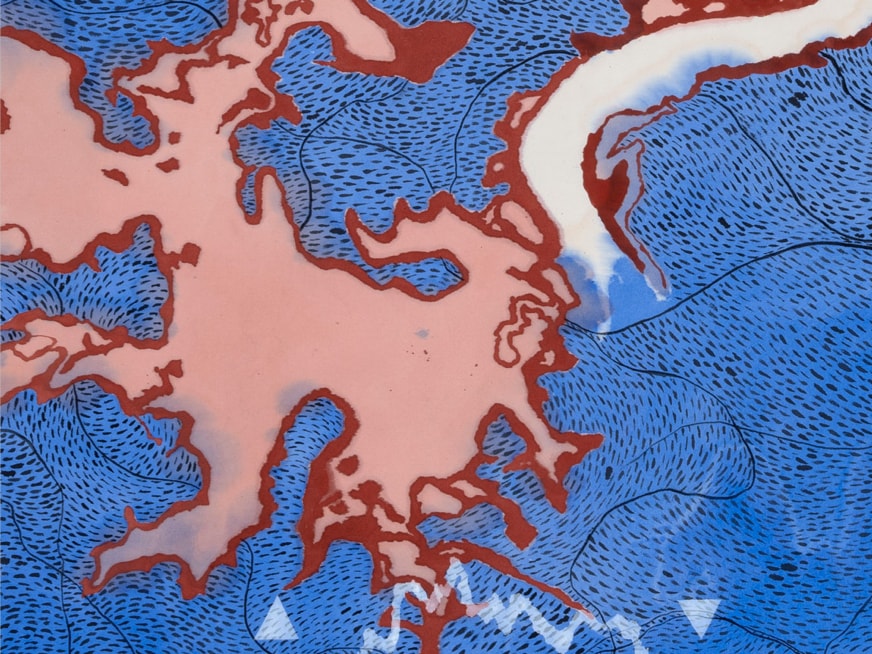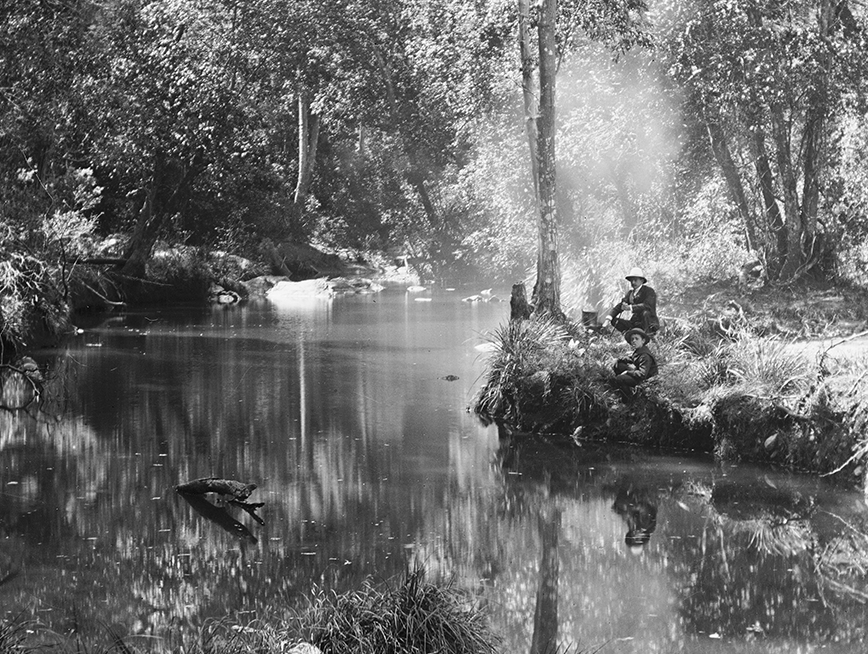First Look Part Two: Archival photographs inspire new commissions for New Light
With only a month until the opening of New Light: Photography Now + Then, we sat down with three of the exhibiting contemporary artists to learn how the Elliott Collection inspired their new works.
Offering a glimpse into the past, the Elliott Collection comprises hundreds of photographs of Brisbane from 1890 to 1940. Captured by the late Alfred Elliott (1870–1954), the archive constructs a particular image of Brisbane, one shaped by Alfred’s personal interests and lived experiences. As he watched the city around him expand through rapid population growth and urban development, he sought to capture how the Brisbane he knew was changing.
Seven contemporary artists have been commissioned to create new works in response to the Elliott Collection. Three of the artists – Keemon Williams, Jo-Anne Driessens and Marian Drew – share their insights into this treasure trove of an archive.
Keemon Williams
Keemon Williams works across photography, digital technologies and sculpture. He uses his practice to critically examine different aspects of his identity, including his relationship to place and culture, often within the broader context of being ‘Australian’.
Exploring the Elliott Collection, Keemon was drawn to a photograph of Point Danger, taken from Duranbah Beach in Tweed Heads. Reflecting on his image choice, Keemon explained, “I was drawn to this image in particular because of the possibility. Some of the other images, the energy is already filled with a parade or an event. This one is so starkly empty. It felt like a quiet moment to jump in and explore the possibilities. It gave me the opportunity to find new moments within the image.”
Keemon’s new work Archival Open World will transform Alfred’s photograph into a futuristic landscape. Using Photoshop, Keemon will manipulate and create a new narrative for the photograph. His work will emphasise the value in using your imagination to connect with, and in some cases reclaim, objects and places that, at first glance, may feel distant or unrelatable.

Jo-Anne Driessens
Jo-Anne Driessens is a social documentary photographer with a passion for archival research. Raised by a non-Indigenous family, she has found photography to be a powerful tool in finding and connecting with her Aboriginal family and the wider community.
Jo-Anne resonated with many of the places Alfred photographed, both personally and culturally. In particular, she was drawn to the recurring presence of bunya pines. “Understanding Country goes hand in hand with knowing how to map and read the signs of Country. Today, when I look at the landscape of Brisbane, I seek out, through contemporary cultural mapping, where the bunya trees still stand. When selecting ‘my favourite’ photo from the Elliott Collection, the Botanic Gardens image stood out and reminded me of the importance of the bunyas; they are still standing as silent witnesses today, not only within the CBD, but also beyond the historical ‘Boundary Street’ memories.”
Jo-Anne will display a series of five works, two of which will pay tribute to the bunya pines in Musgrave Park, a site of significance for many Aboriginal people. The park was once Aboriginal camping ground, and since the 1960s, has been the focus of significant Aboriginal protests and cultural events. Jo-Anne’s work will offer a new reading of the Elliott Collection, one rooted in her lived experiences.

Marian Drew
Marian Drew’s experimental approach to photography brings together elements of sculpture, performance and installation. She explores the role of photography in shaping our view of the world, and in particular, our attitude towards the environment.
Delving into the Elliott Collection, Marian felt an instant connection to the photographs of Brisbane’s natural landscapes. “The evocative nature of his historic work for me lies in the familiar landscapes and the strangeness of the photographic record. Conceptions of time as past, present and future frame ideas of nostalgia, comparison, location and value. But science tells us time is not linear, that time can be experienced as folded and layered, compressed and elastic,” reflects Marian.
Marian’s new work will apply this school of thought to the Elliott Collection. She will digitally manipulate three of the Collection photographs, then print them onto sheets of mirror. Looking at her work will enable you to feel part of Alfred’s images – you will literally see yourself reflected in his photographs. By printing onto mirror, Marian seeks to convey how the reading of a photograph reflects the lives and experiences of the viewer.

New Light: Photography Now + Then opens this August. MoB Members are invited to join a special preview on Friday 16 August. Find out more here.
Not a MoB Member?






